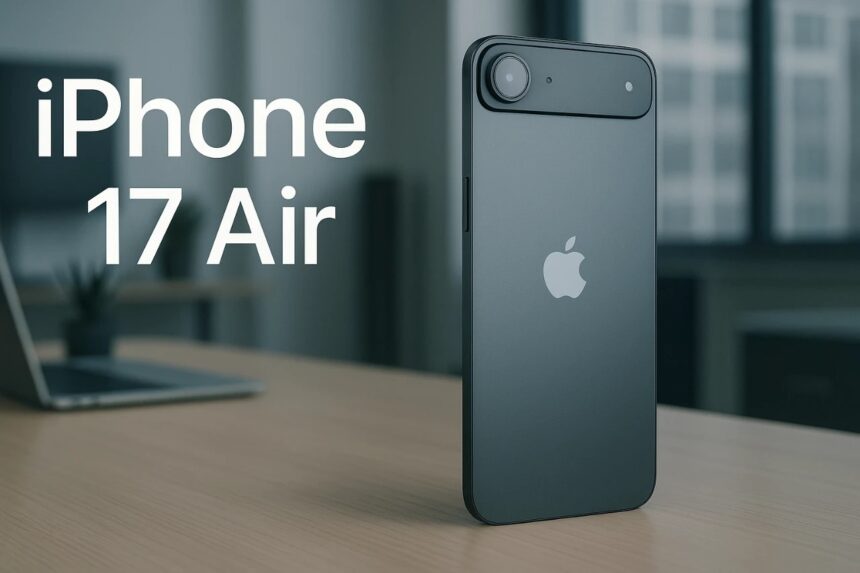Apple’s latest hardware event has once again captured global attention, unveiling a suite of products that stretch from the sleek iPhone 17 to the reimagined iPhone Air and a refreshed AirPods Pro 3. While the event carried the usual polish of Apple’s stagecraft, the underlying message was clear: Apple is betting on slimmer design, seamless integration, and ecosystem loyalty as its next growth engine.
The flagship iPhone 17 continues Apple’s tradition of refining the essentials rather than reinventing. A more advanced camera system, longer-lasting battery, and improved chip efficiency headline the upgrades. For many, these are evolutionary changes rather than revolutionary—but Apple has long thrived on turning small shifts into cultural waves.
The phone also deepens Apple’s reliance on AI-powered features. Smarter photography, predictive text improvements, and security tools hint at a company that sees artificial intelligence not as a product in itself but as a quiet enabler of everyday use.
iPhone Air: Apple’s Thin Gamble
The iPhone Air stole much of the spotlight. As one of the thinnest smartphones Apple has ever produced, it leans into aesthetics and portability. Marketed as a blend of power and elegance, the Air positions itself for users who value lightness without compromising on performance.
This push echoes Apple’s long-standing obsession with slim designs, but critics may ask whether thinner always means better. Questions around durability and repairability will likely surface, especially in an era where e-waste and product longevity are gaining global attention.
The AirPods Pro 3 did not bring sweeping innovation, but its upgraded audio quality and improved noise-cancellation demonstrate Apple’s incremental mastery. By layering upgrades over time, Apple ensures its accessories remain deeply tied to its flagship products.
More importantly, AirPods have evolved from optional extras to cultural symbols. The Pro 3 reinforces that role while making the experience more seamless within the Apple ecosystem.
A Bigger Play for Ecosystem Dominance
Beyond individual devices, the event underscored Apple’s strategy of tightening its ecosystem. New software integrations across iPhones, AirPods, and other devices show the company’s focus on building a web of interdependent tools. Once inside, it becomes harder for consumers to step out.
For Apple, the aim is not just to sell hardware but to cement long-term digital loyalty. As subscription services, AI integration, and cloud storage increasingly tie into the hardware, Apple is positioning itself less as a phone-maker and more as a lifestyle infrastructure provider.
Why it Matters
While Apple’s announcements dominate headlines in the United States, their ripple effects matter worldwide. In Africa, where access to premium Apple devices remains limited by cost, these launches reinforce the widening digital divide. Yet, they also shape global standards for mobile technology, indirectly influencing how competitors—from Android makers to local startups—design and market their devices.
Apple’s new lineup may not be radical, but its power lies in shaping the everyday expectations of billions. By making “incremental” the new “essential,” Apple continues to dictate not just the pace of tech innovation but also the rhythm of digital life.
Talking Points
Apple thrives on polishing, not reinventing. The iPhone 17 and AirPods Pro 3 are evolutionary, not revolutionary. Yet, Apple’s marketing machine convinces consumers that subtle tweaks are must-haves. Should the global tech industry continue rewarding this cycle of minimal upgrades at premium costs?
The iPhone Air’s ultra-slim design fits Apple’s aesthetic legacy. But in an era where durability, repairability, and sustainability are critical, do we really need thinner phones—or sturdier, longer-lasting ones? Apple’s priorities may reflect profit over planet.
More than hardware, Apple is building digital dependency. Seamless integration sounds convenient, but it’s also a clever cage. Once inside, leaving Apple’s ecosystem feels almost impossible. Should consumers be wary of trading freedom for convenience?





